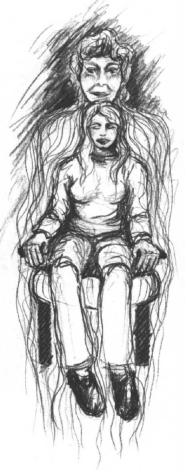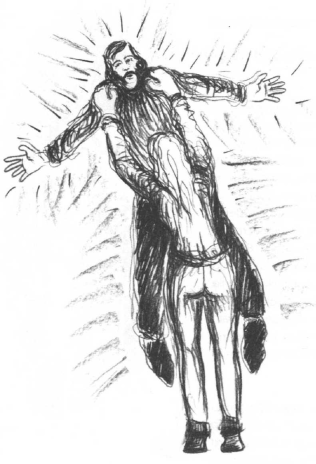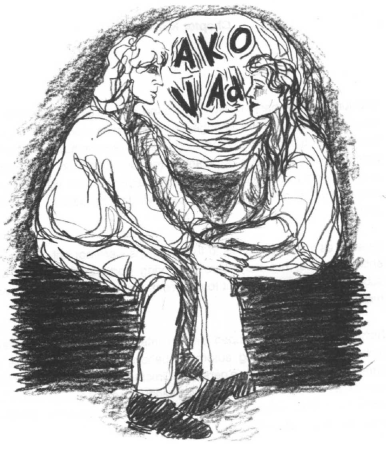Chapter Eighteen. Leslie and Virginia
The groups in the Santa Cruz mountains at the retreat lodge had primarily to do with hypnosis and the investigation of deep trance phenomena, positive and negative hallucination, time distortion and deep trance identification. Richard and John operate on the premise that modelling skilled people in your field of interest was a way to learn but becoming them was even better. Several experiments were then developed to do deep trance identification with people like Virginia Satir, Fritz Perls and Milton Erickson. To begin to associate in the first person with these people and to be able to identify and utilize the communication patterns that made them so powerful.

Leslie began to blossom. In one of the group sessions Richard taught her to do deep trance identification with Virginia Satir. I heard that for awhile Leslie was Virginia. She even developed amnesia for the group members and the results were that Leslie became a better Virginia than Virginia.

Her acquired skill appeared to increase dramatically after that evening. I can safely say that I was instrumental in some of her changes. At one group session on the meta model she was the "people helper" and I was her client. Atone point in our session she took me and thru me up against the wall. She said that it was the first time that she realized her personal power.
The Santa Cruz mountain group and the groups that were held at Richard's house were the development of NLP. During this time period which was in 1974 the next experiments were taking place concerning what was later called anchoring, which is the pairing of a stimuli with a highly predictable set of responses.
Ivan Pavlov gained fame with his experiment involving the study of the buzzer associated with a dog's salivating response. Anchoring is a technique which was originally brought about thru the discovery of classical conditioning. What is unique about this in NLP terms is that John and Richard developed techniques on how to utilize this information in a unique application, that was talked about in some psychology circles as cognitive behavioural therapy; which in the context of anchoring is an accurate description.
Anchoring is used to create or access resources and problematic states in clients. Another way to use the idea of anchors is to identify existing anchors and change their experiential significance and to be able to use them in a more meaningful context.
Chapter Nineteen. 5-Tuples
The fundamental basis of NLP originated as a five-tuple A-K-O-V-Ad. Very shortly after it was changed to the current representation of a four-tuple (4-tuple). Simply meaning multiple representations. We first practiced with anchoring of polarities (opposites) and in using visual, auditory and kinesthetic anchors. We experimented with tests for integrating the anchoring techniques which was called "Jamming Anchors".
As early as 1974, individuals in these groups were not only anchoring entire 4-tuples, but they were anchoring portions of 4-tuples and submodalities and applying it to pain control and creating amnesia and pattern interruption.
Richard and John developed pattern interruption into a systematic technique for interrupting automatic behaviours for the purpose of creating leverage to enable a person to direct a client into an altered state of consciousness. We were also using various components of anchoring and 4-tuples for hypnotic phenomena such as age regression, amnesia and deep trance identification.

The primary patterns which developed out of the association with Dr Milton H. Erickson was the model of communication called the "Milty Model". The Milty Model is the inverse of the Meta Model. In contrast, the Milty Model provides the user with the ability to speak directly to the unconscious mind and in the hands of a skilled user, doing so without the conscious minds awareness.
The Milty Model consists of embedded questions, embedded commands, conversational postulates, direct quotes and presuppositions, collectively termed "junko logic". In association with nonverbal pacing and leading and selective use of sensory predicates, it provides a very powerful vehicle for trance induction and utilization of an altered state of consciousness. Richard and John turned the "magic" of hypnosis into learnable procedures.
In association with Milton's work, Richard and John also came across Castaneda's books, The Teachings of don Juan, The Yaqui Way of Life, A Separate Reality and Tales of Power. From there it was an integration of don Juan's use of metaphor and hypnosis and Milton Erickson's language patterns and metaphor to induce an altered state of consciousness to create deep trance phenomena.
One of the most dynamic techniques which evolved out of the hypnosis programs was the use of the double induction. The double induction is a trance induction carried out by two people. One person speaks into one ear using complex words and language patterns to occupy one brain hemisphere and the other person speaks into the other ear using childlike grammar and language to occupy the other brain hemisphere. The feeling sensations are experienced in the same half of the body as the auditory input.
This technique was used in conversations that Carlos Castaneda had with don Juan and don Genaro. This technique was used frequently during the summing up of Richard and John's training programs as a forum for review, post hypnotic suggestions for future applications and learnings.
Chapter Twenty. Don Juan
The groups then took on an aura of magic and mysticism as don Juan came on the scene. There were several different experiments about the phenomenon now called "stopping the world" which was a major technique and strategy applied to Castaneda's development process. Anchoring was a tool that we were taught to stop the world as well as other tools such as reframing techniques.
The key to success in don Juan's world was to be able to stop the world. Only then could you be accessible to power; or in Milton Erickson's frame of reference, to stop the internal dialogue, don Juan considered it necessary to use peyote (a hallucinogenic plant) to interrupt Castaneda's internal dialogue so he could achieve states of unusual reality. However as don Juan stated peyote was only necessary because Castaneda was so rigid. There is a similarity with stopping the world (don Juan's frame of reference) and stopping the internal dialogue.
The two primary techniques that we experimented with for stopping the internal dialogue was the use of what was called jamming anchors and six step reframing. I spent most mornings doing reframing and then in the afternoons I would walk into the redwood forests of the Santa Cruz mountains, pick a remote spot, sit down and practice stopping the world. The benefits are very tangible. Some being increased spontaneity and creativity. Availability to information and other resources.
There was much overlap in the model NLP and the model of Ericksonian Hypnosis. Many of the techniques cross over from one model to the other. We often did experiments finding out what kind of patterns were going to be the most effective in curing people.